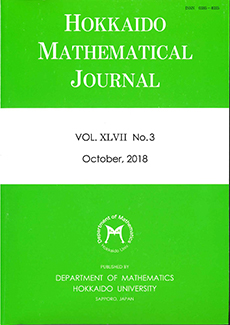Abstract
Consider the following discrete model of nonautonomous Lotka-Volterra type: \[\left\{ \begin{array}{ll} N_i(p+1) = N_i(p) \exp \{ r_i(p)(c_i(p)-b_i(p)N_i(p)- \dis \sum_{j=1}^n \dis \sum_{l=0}^m b_{ij}^l(p) N_j(p-l)) \}, \\ \hspace{8cm} p=0,1,2,\cdots, \ 1 \leq i \leq n, \\ N_i(0) = N_{i0} > 0 \ and \ N_i(-l)=N_{i(-l)} \geq 0, \ 1 \leq i \leq n, \ 1 \leq l \leq m, \\ \end{array} \right. \] where \[ \left\{ \begin{array}{ll} r_i(p)>0, \ for \ p \geq 0, \ \dis \liminf_{p \to \infty}r_i(p)>0, \\ b_i(p)>0, \ b_{ii}^0(p) = 0, \ 1 \leq i \leq n, \ b_{ij}^l(p) \geq 0, \ 1 \leq i \leq j \leq n, \ 0 \leq l \leq m. \\ \end{array} \right. \] In this paper, to the above discrete system, we establish two type sufficient conditions that ensure the "contractivity" of solutions which are sufficient conditions of the global asymptotic stability of system. This is an extension of the former work (2002, ${\it J. Math. Anal. Appl.} {\bf 270}, 602-635$) for $n=1$ to $n \geq 2$. In particular, for autonomous case of the above system, the sufficient condition for the global asymptotic stability of the positive equilibrium offered by Wang et al. (2002, ${\it J. Math. Anal. Appl.} {264}, 147-169$), is proved to satisfy this contractivity of the positive equilibrium.
Citation
Yoshiaki MUROYA. "Contractivity and global stability for discrete models of Lotka-Volterra type." Hokkaido Math. J. 34 (2) 277 - 297, June 2005. https://doi.org/10.14492/hokmj/1285766223
Information





